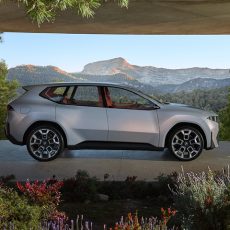 In a world of cars made from weird material, the Kestrel surely takes the cake
In a world of cars made from weird material, the Kestrel surely takes the cake
Story: Saeed Akhtar
Canada, while being associated with many laudable acts, has rarely made any waves in the automotive world. and that’s why Motive industries, an alberta-based start-up, created such a stir when it announced plans to produce the country’s first bio-composite car, called the Kestrel.
 The news became all the more significant when bloggers and Internet fora across the world came to learn that the Kestrel eV would be made from a hemp-based bio-composite material.
The news became all the more significant when bloggers and Internet fora across the world came to learn that the Kestrel eV would be made from a hemp-based bio-composite material.
Now, hemp, as we know it, is commonly associated with cannabis, one of the most infamous recreational drugs around the world. This association led many to dub the Kestrel ‘the Cannabis Car’ – an erroneous notion because the car is actually derived from a bio-composite material extracted from hemp, which is cultivated from plants of the Cannabis genus.
Motive industries gets its hemp from alberta innovates Technology Futures (aiTF), which, in turn, purchases its cannabis stock from an industrial hemp farm in Vegreville, alberta. everything here is strictly monitored by the Canadian government. beyond the novelty factor, hemp actually makes sense as a vehicle material – it is light, less expensive and more ecologically sustainable than conventional composites. in europe, lightweight sports car makers lotus have already taken note of these benefits and also explored it with their 2008 eco elise concept. This is also not the first time that Motive industries is working with bio-composites. One of the company’s earlier projects, the Motive Switch extended-range hybrid, also had bio-composite panels and competed for the Automotive X Prize back in 2008.
 Back to the Kestrel. First unveiled at the Vancouver Motor Show last year, this EV is the brainchild of Project Eve, a consortium of 11 Canadian companies that focuses on next generation ‘pure’ electric mobility technologies. As well as the Kestrel, the consortium is already testing a two-passenger EV and intends to release a one-passenger, three-wheeled vehicle, a small SUV and a delivery van. The Kestrel is a three-door, four-passenger car, with a short front end and very forward-placed front wheels, resulting in a cab-forward design that should help the driver in manoeuvring crowded city streets. The design is facilitated by a somewhat unusual door hinge line that extends right into the front wheel well. The swooping arches and modern features hide a 16 kWh Li-ion battery pack which endows this 850-kg car with an overall range of 160 kilometres and a top speed of about 135 km/h.
Back to the Kestrel. First unveiled at the Vancouver Motor Show last year, this EV is the brainchild of Project Eve, a consortium of 11 Canadian companies that focuses on next generation ‘pure’ electric mobility technologies. As well as the Kestrel, the consortium is already testing a two-passenger EV and intends to release a one-passenger, three-wheeled vehicle, a small SUV and a delivery van. The Kestrel is a three-door, four-passenger car, with a short front end and very forward-placed front wheels, resulting in a cab-forward design that should help the driver in manoeuvring crowded city streets. The design is facilitated by a somewhat unusual door hinge line that extends right into the front wheel well. The swooping arches and modern features hide a 16 kWh Li-ion battery pack which endows this 850-kg car with an overall range of 160 kilometres and a top speed of about 135 km/h.
 Though it’s a four-passenger car, Motive says the Kestrel is targeted mostly at city drivers who are usually alone or only have one passenger in the car. The company plans to have the prototype built by the end of 2011, with production to start in 2012 to secure certification and start retail sales in late 2012. While hemp-based body panels may not form the basis for electric cars of the future, they do offer an interesting peek into the shape of things to come. And, no, blowing up the car won’t get you high!
Though it’s a four-passenger car, Motive says the Kestrel is targeted mostly at city drivers who are usually alone or only have one passenger in the car. The company plans to have the prototype built by the end of 2011, with production to start in 2012 to secure certification and start retail sales in late 2012. While hemp-based body panels may not form the basis for electric cars of the future, they do offer an interesting peek into the shape of things to come. And, no, blowing up the car won’t get you high!




